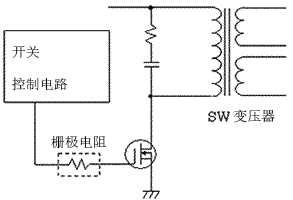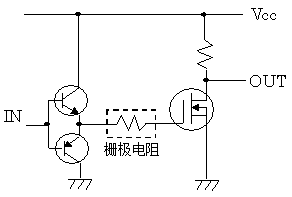Technical article
Current Fuses and Fusing Resistors
How To Use Current Fuses and Fusing Resistors
Current Fuses are one of the simplest devices to protect a circuit. The resistors with fusing function protect the equipment or parts from burning by breaking the abnormal current in a malfunction such as short-circuiting. TF, CCP , and CCF are lined up.
This product also has the fusing function. It works to fuse and prevent semiconductor element or resistor from burning or firing when the current exceeding fusing power is dissipated.
TF Chip fuses
Characteristics
It is a small, lightweight chip current fuse for secondary circuits.
According to the exclusive structure and production method, the fuse characteristics are stable.
Can reduce the occupied area.
Low internal resistance and reduced voltage can reduce power consumption.
Overcurrent protection for circuit components for small electronic devices.
Corresponding to reflow soldering and wave soldering.
Conforms to EU RoHS.
CCP Circuit protection component
Characteristics
When the current is too large, the circuit can be cut off quickly, smokelessly and without heat.
The metal electrode is used, the terminal strength is excellent, and the solder adhesion is excellent.
The exterior molding is molded, the dimensional accuracy is high, and the mounting performance is excellent.
Terminal lead-free products, in line with EU RoHS.
Corresponding to reflow and wave soldering
CCF Chip current fuse (anti-vulcanization type)
Characteristics
Excellent resistance to vulcanization due to the use of high-performance anti-vulcanization materials.
According to IEC60127-4. (7A or less)
It is made of ceramic body and has excellent mechanical strength.
Corresponding to reflow and wave soldering.
Conforms to EU RoHS.
Fusing resistors are suitable where certain resistance is required for using a circuit and a failure of any other device might cause smoke or fire. In general, blow speed is slower than that of current fuse, it will not be recommended for instantaneous fusing requirement. Check fusing resistor lineup of leaded resistors for RF73 RF RF26 RF25CC and WF.
| Current Fuses | Fusing Resistors | |
| Normal function | Zero current path | Specified value resistor |
| Overload | Blow | Blow |
| Cause of blow | Over current | Over power dissipation |
| Fusing Characteristics | Instantaneous fusing Precise fusin | Slow blow Wide scatter in fusing |
Application Examples of Current Fuses
One piece of the fusing product is enough as long as the fuse of the main power supply is fused when any local failure of power circuit is caused. But the power supply of today's equipment is divided into several independent blocks and the main power supply unit sometimes fails to detect the malfunction in terminal where current is small. A failure, severe enough to cause a danger in the local block, might not always be detected at the main fuse.
To design a safe circuit, we recommend fuses or some protective devices should be included in each branch or block so circuits shall not emit smoke or catch fire even if a malfunction like short-circuit or motor lock is caused in each block.
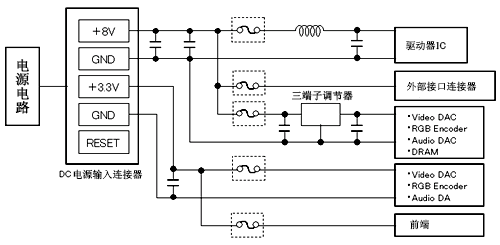
Diagram of TF structure
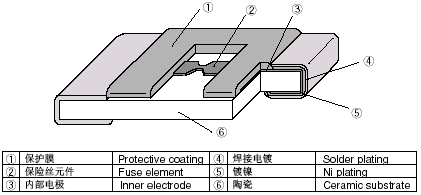
Diagram of CCP structure
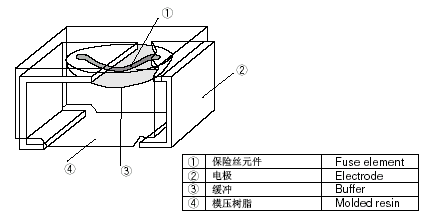
Diagram of CCF structure
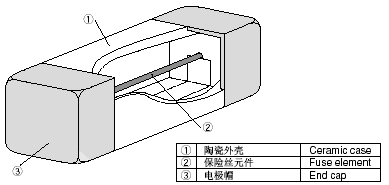
Application Example of Fusing Resistors
In the IC circuit recommended, a resistor is inserted in to the power supply Vcc in series, it works as a current limiter, and at the same time as a decoupling device with noise together with the capacitor.
But in case of failure, when the IC or the capacitor is short circuited, depending on the supply voltage and resistance value, the resistor may emit smoke or catch fire without operating any protector circuit. Fusing Resistors RF RF73 are suited to break the current without burning.
RF Coated insulated fuse resistor
Characteristics
Usually functions as a resistor.
For abnormal overload, quickly blow and protect the circuit.
Flame retardant coating (equivalent to UL94 V-0).
Conforms to EU RoHS.
RF73 Rectangular chip fuse resistor
Characteristics
It functions as a resistor during use, and it quickly breaks when it is abnormal to prevent damage to the circuit.
It is the same shape as the R73 series.
It is UL1412 safety standard certification product (1J is not recognized).
Corresponding to reflow soldering and wave soldering.
Terminal lead-free products, in line with EU RoHS. Lead glass contained in electrodes, resistive layers, and glass is not applicable to the EU RoHS Directive
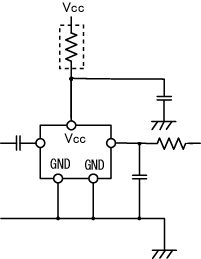
Resistors to suppress parasitic oscillation of emitter follower circuit
Emitter follower circuits are often used to realize low output impedance amplifiers. But they can oscillate parasitically unless proper attention is paid. When this phenomenon is overlooked, unexpected trouble may be caused, e.g. EMI. Moreover, it is difficult to check oscillation because the condition is so delicate as to be changed by touching with a probe of an oscilloscope. Still more, oscillation can be stopped even with changing temperatures.
An effective solution for this kind of oscillation will be to decouple the collector from the Vcc and to put a resistor Rb, ranging from several 10 to several 100, to the base circuit as illustrated. When the emitter load is capacitive, inserting a low resistance resistor into the load in series also has an effect.
For power amplifiers, this series resistance becomes very small. And it might bring about unexpected heating or going up in smoke depending on the transistor failure mode. In such situations, Fusing Resistors RF or RF73 which has a fuse function is recommended. Rush current should be taken into consideration together when choosing Fusing Resistors.
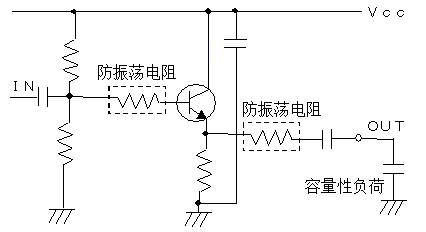
Resistors to stabilize FET switching operation
MOSFET is popular high frequency switching device. A gate resistor of a low value has an effect of stabilizing switching operation. If resistance is too low, it may give instability due to chattering at transistor "on" and "off" transient. On the other hand, the waveform becomes dull if gate resistance is too high. Therefore the suitable value should be determined by observing the waveform. This consideration is especially important for power MOS devices, because the gate resistance may have correlation to surge voltage and switching energy loss.
For power MOSFET, this gate resistance becomes very small. And it brings unexpected heat and emission of smoke due to the transistor failure mode. In such situations, Fusing Resistors RF or RF73 which has a fuse function is recommended. Rush current should be taken into account together when choosing Fusing Resistors.
